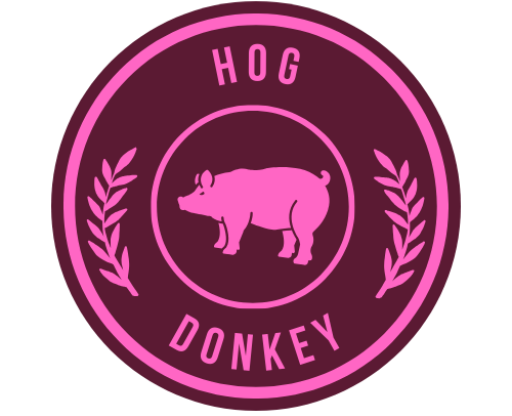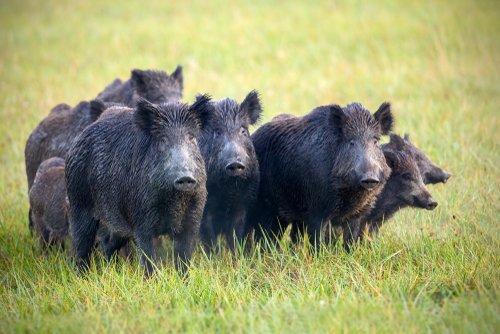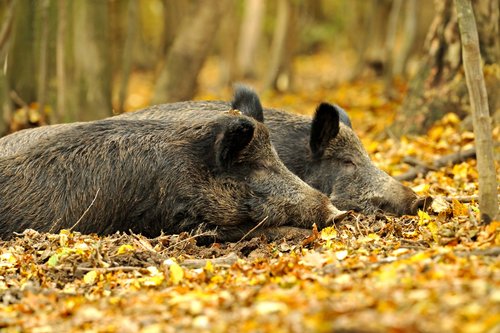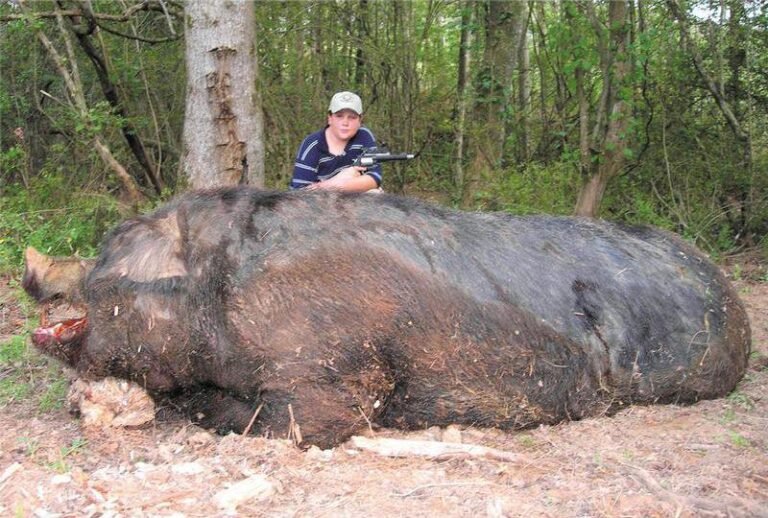Landowner Relations in Hog Hunting – What You Need to Know Now
Hog hunting has become increasingly popular in recent years, attracting hunters from all backgrounds. However, it is crucial to recognize that this thrilling pursuit goes beyond just the thrill of the chase. Landowner relations in hog hunting revolve around building and maintaining positive relationships with landowners. This article will delve into the importance of landowner relations in hog hunting and highlight the numerous benefits these relationships can bring.
Importance of landowner relations in hog hunting
Regarding hog hunting, landowners are a pivotal part of the equation. These individuals are key to accessing prime hunting grounds and can permit hunters to pursue their passion on their properties. WHunters may find themselves without places to hunt or facing restricted access. Without strong relations with landowners
Furthermore, fostering positive relationships with landowners is beneficial for individual hunters and the entire hog-hunting community as a whole. By demonstrating responsible behavior, respect for property rights, and appreciation for conservation efforts, hunters can establish a reputation that may lead to broader opportunities for future access or potential partnerships with landowners.
Benefits of maintaining positive relationships with landowners
Maintaining strong relationships with landowners is mutually advantageous. For hunters, having a good rapport means gaining trust and increased access to prime hog hunting territories. Landowners who feel respected and appreciated are more likely to grant permission for continued use or may even provide exclusive opportunities, such as inviting trusted hunters during specific seasons or targeting nuisance hogs.
Beyond mere access privileges, positive interactions forge an environment conducive to open communication between both parties. This communication enables dialogue on property management strategies and collaborative efforts toward effective hog population control measures.
Such cooperative endeavors foster cohesive communities where information sharing becomes the norm, and hunters can thrive in their pursuit while supporting landowners in mitigating the damages caused by feral hogs. Ultimately, maintaining positive relationships with landowners contributes to the greater goal of sustainable hog management.
By aligning interests, hunters and landowners can work together to address local hogs ‘ ecological and economic challenges. TEffectivesolutions can be implemented through such partnerships, minimizing ecosystem damage, protecting agricultural fields from destruction, and ensuring a harmonious coexistence between hunters, landowners, and wildlife.
Understanding Landowner Expectations and Concerns
Communication and negotiation with landowners
Effective communication and negotiation are key to building a successful relationship with landowners in the context of hog hunting. Before stepping foot on their property, it is crucial to establish clear lines of communication.
Reach out to the landowner, introduce yourself, and express your interest in hog hunting while demonstrating your respect for their property. Be open to discussing their expectations, concerns, and any specific rules they may have.
During negotiations, be prepared to compromise if necessary. Remember that the landowner is vested in protecting their property and maintaining its value.
Show them you are willing to respect their boundaries by discussing access points, hunting times, and any other restrictions they may impose. Finding common ground through respectful conversations and thoughtful compromises can lay the foundation for a harmonious relationship.
Respecting property boundaries and rules
Once an agreement is reached with the landowner regarding hog hunting, it is paramount to adhere to property boundaries and follow established rules strictly. Respect these boundaries physically and by being mindful of noise levels that could disturb neighboring properties or wildlife habitats.
Hog hunting requires knowledge of terrain features and understanding where hogs are most likely to be found. By familiarizing yourself with maps or getting guidance from the landowner on areas where hogs tend to congregate or cause damage, you can focus your efforts appropriately while avoiding sensitive areas such as crop fields or water sources.
Addressing concerns about property damage, liability, and safety
A common concern among landowners when allowing hog hunting is the potential for property damage caused by hunters or hogs. It is essential to address these concerns proactively to alleviate any worries.
Assure the landowner that you will take responsibility for any damages that may occur during your hunting activities and offer to sign liability waivers if requested. Moreover, emphasize the safety precautions you will take during hog hunting.
Discuss using appropriate firearm safety measures, wearing bright and visible clothing to avoid accidents, and following all local laws and regulations. By demonstrating a commitment to safety and being accountable for any potential mishaps or damage, you can earn the trust of landowners and strengthen your relationship with them.
Establishing Trust and Building Relationships with Landowners
Demonstrating responsible hunting practices
Regarding hog hunting, demonstrating responsible hunting practices is essential in building trust with landowners. This means showing them that you are not just a trigger-happy enthusiast but a conscientious hunter who respects the land, wildlife, and their property. Start by familiarizing yourself with local hunting regulations and laws to comply with the authorities.
Proper disposal of harvested hogs
One crucial aspect of responsible hog hunting is the proper disposal of harvested hogs. Landowners want to ensure you are not leaving carcasses lying around or attracting scavengers that could cause additional problems.
To address this concern, consider bringing heavy-duty trash bags or game carts to promptly remove the hogs from the property. Dispose of them responsibly by following local regulations or contacting nearby processing facilities for meat processing or safe disposal.
Minimizing disturbance to other wildlife and habitats
Responsible hog hunting also involves minimizing disturbance to other wildlife and habitats on the landowner’s property. While your primary focus may be on eliminating feral hogs, it is crucial to be mindful of other species that call this habitat home.
Avoid excessive noise levels during hunts, as loud sounds can frighten away animals and disrupt their natural behavior patterns. Be cautious when traversing through sensitive areas such as wetlands or nesting sites, and avoid damaging vegetation or destroying habitats while tracking hogs.
Following ethical hunting guidelines
Following ethical hunting guidelines is vital for trusting landowners who value animal welfare and conservation efforts. Hunt by ethical standards by ensuring clean kills using appropriate firearms or archery equipment suited for hog hunting.
By prioritizing quick, humane kills, you minimize unnecessary suffering for the hogs and demonstrate your commitment to ethical hunting practices. Additionally, practicing fair chase principles, such as avoiding baiting or excessive use of technology to gain an unfair advantage, will show landowners that you value the integrity of the hunt.
Building trust with landowners is not an overnight process; it requires consistent adherence to responsible hunting practices. Demonstrating respect for their property, responsibly disposing of harvested hogs, minimizing disturbance to other wildlife and habitats, and following ethical hunting guidelines can establish a strong foundation for a lasting relationship with landowners in hog hunting.
Collaborative Hog Management Strategies with Landowners
Developing a comprehensive hog management plan together
When it comes to dealing with feral hogs, collaboration between hunters and landowners is crucial. Both parties should work together to develop a comprehensive hog management plan that considers the property’s specific needs and challenges. This plan should outline each party’s goals, strategies, and responsibilities.
By working collaboratively, landowners can benefit from the expertise of hunters while ensuring that their land is effectively managed. The first step in developing a hog management plan is to assess the property and identify areas prone to hog activity.
This can be done through observation, tracking signs such as rooting or wallowing areas, and even using trail cameras to monitor hog movement patterns. By understanding where hogs frequent on the property, hunters and landowners can strategically focus their efforts on those areas.
Implementing effective trapping or hunting methods for population control
Once areas prone to hog activity have been identified, it’s important to implement effective trapping or hunting methods for population control. Trapping is considered one of the most efficient methods for managing feral hogs, as it allows for capturing multiple hogs simultaneously. Various types of traps are available, such as corral or box traps, which can be set up strategically based on the identified hotspots.
Hunting can also be an effective method for controlling feral hog populations. It’s essential to employ responsible hunting practices, prioritizing safety and efficiency while minimizing any negative impact on the property or other wildlife species.
Hunters should follow ethical guidelines such as targeting specific age groups or sizes of hogs to maintain a healthy population balance. Hunters and landowners must stay informed about new techniques and best practices in hog management to ensure success in population control efforts.
Attending workshops or seeking guidance from experienced professionals can provide valuable insights into innovative trapping or hunting methods. Regular monitoring and evaluation of the implemented strategies will help gauge their effectiveness and make necessary adjustments.
Collaborative hog management strategies involve the development of a comprehensive plan that addresses specific property needs, identifying areas prone to hog activity, and implementing effective trapping or hunting methods for population control. By working together, hunters and landowners can optimize their efforts in managing feral hogs and mitigate the damage caused by these invasive species.
Offering Incentives for Landowners’ Cooperation in Hog Hunting Efforts
Providing compensation or sharing harvested meat
In hog hunting, it’s crucial to recognize the value of a mutually beneficial relationship with landowners. One way to foster cooperation is by providing some form of compensation. Many hunters offer financial compensation to landowners for granting access to their property for hog hunting.
The amount can vary depending on factors such as the size of the property, the population density of hogs, and local market prices. This compensation shows appreciation for the landowner’s cooperation and helps offset any potential damages caused during hunting activities.
Another incentive that hunters often use is sharing harvested meat with landowners. Feral hogs can cause significant damage to crops and landscapes, so landowners are usually pleased when skilled hunters address their hog problem.
Sharing a portion of the harvested meat provides a tangible benefit for the landowner and highlights how hog hunting is an effective management strategy. It creates a win-win situation where landowners get relief from hog-related issues while hunters acquire access to prime hunting locations.
Assisting with property maintenance or improvement tasks
In addition to compensating landowners monetarily or through shared meat, offering assistance with property maintenance or improvement tasks can be another valuable incentive for building strong relationships. Hog hunting often requires mobility across various terrains, which means that vehicles and equipment may leave tracks or cause minor disturbances on the property. By taking responsibility for repairing any damages incurred during hunts or assisting with ongoing maintenance needs like clearing brush or fixing fences, hunters demonstrate their commitment to minimizing any negative impacts of their presence.
Moreover, some experienced hunters may possess skills and knowledge beyond just hog hunting expertise that could be useful for landowners. Whether it’s repairing damaged infrastructure like roads and water sources, providing guidance on habitat conservation, or offering assistance in managing other wildlife populations, these added contributions can significantly enhance the value of the hunter-landowner relationship.
By going above and beyond the primary goal of hunting hogs, hunters can establish themselves as reliable partners and cultivate a stronger sense of trust with landowners. By providing compensation, sharing harvested meat, and offering assistance with property maintenance or improvement tasks, hunters can effectively incentivize landowners to cooperate in hog hunting efforts.
These incentives not only demonstrate appreciation for landowners’ cooperation but also showcase the broader benefits that come from responsible hog management. By fostering these mutually beneficial relationships, hunters gain access to prime hunting locations while helping landowners address their hog-related issues and contribute positively to managing feral hog populations.
Resolving Conflicts and Disputes between Hunters and Landowners
Open communication channels for addressing issues promptly
When engaging in hog hunting on someone else’s property, it is crucial to establish open lines of communication with the landowner. This not only helps in building trust but also allows for the prompt resolution of any conflicts or disputes that may arise.
It is essential to exchange contact information, such as phone numbers or email addresses, so any issues can be addressed promptly. Regularly check in with the landowner to ensure everyone is on the same page and any concerns can be resolved quickly.
Furthermore, it is important to encourage landowners to communicate their expectations and concerns openly. By actively listening and being receptive to their feedback, hunters can demonstrate their commitment to maintaining a positive relationship.
Landowners may have specific rules or boundaries they want hunters to abide by, such as designated hunting areas or when hunting is permitted. By honoring these requests and respecting their property, hunters can help alleviate potential conflicts before they occur.
Mediation or involving third-party organizations, if necessary
Sometimes, disputes between hunters and landowners can become more complex or challenging to resolve through direct communication alone. In such cases, mediation or involving third-party organizations can be beneficial in finding a fair resolution for all parties involved.
Mediation involves bringing in an impartial third party who facilitates negotiations to find a mutually agreeable solution. This mediator ensures that all voices are heard and helps navigate emotional or contentious discussions.
They can assist in clarifying misunderstandings, mediating compromises, and guiding both parties toward an outcome that honors everyone’s interests. When mediation proves unsuccessful or the conflict escalates further, involving professional organizations dedicated to landowner-hunter relations may be necessary.
These organizations often specialize in dispute resolution and can provide expert guidance and support. Their experience in dealing with similar situations can be invaluable in finding a resolution that satisfies both the landowner’s concerns and the hunter’s interests.
Finding Common Ground for Sustainable Solutions
Resolving conflicts and disputes between hunters and landowners requires a collaborative mindset, open communication, and a genuine willingness to find common ground. By maintaining open communication channels, promptly addressing issues as they arise, and involving third-party mediators or organizations when necessary, hunters can navigate conflicts effectively while preserving their relationships with landowners. Ultimately, finding sustainable solutions allows for the continued enjoyment of hog hunting while respecting landowner rights and maintaining positive interactions within the hunting community.
Educating Landowners about the Ecological Impact of Feral Hogs
Explaining the destructive nature of feral hogs on ecosystems
Regarding landowner relations in hog hunting, it is crucial to teach landowners about feral hogs’ ecological impact. These seemingly innocuous creatures may appear harmless at first glance, but their presence can wreak havoc on ecosystems. Feral hogs are notorious for their destructive feeding habits involving rooting and wallowing in the soil.
They plow through fields and forests, tearing up vegetation and destroying habitats for native wildlife. The damage caused by their relentless digging disrupts delicate ecosystems and alters natural biodiversity.
Feral hogs are also prolific breeders, capable of having multiple litters yearly. Their high reproductive rate leads to exponential population growth if left unchecked.
As hog populations explode, they outcompete native wildlife for resources such as food and water, further compromising ecosystem balance. Consequently, many species that depend on these resources face displacement or extinction due to hog invasion.
Discussing long-term consequences if not managed effectively
Landowners must understand that failing to manage feral hog populations effectively can have severe long-term consequences for their property and surrounding areas. Unchecked feral hog populations expand rapidly across vast territories, leading to unprecedented habitat destruction.
This devastation affects agricultural lands and protected natural areas such as national parks or wildlife refuges. The financial impact cannot be overlooked either.
Feral hogs cause significant damage to crops, including cornfields, soybean fields, and rice paddies. This agricultural destruction results in substantial economic losses for farmers and landowners alike.
Moreover, unmanaged feral hog populations increase the risk of spreading diseases among domestic livestock or humans due to their potential role as carriers or vectors. Diseases such as brucellosis, pseudorabies, and swine flu seriously threaten animal and human health.
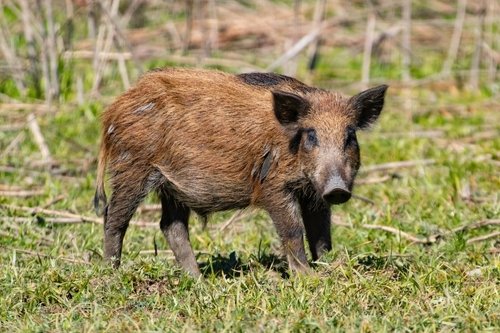
Conclusion
Educating landowners about the ecological impact of feral hogs is essential to fostering positive landowner relations in hog hunting. Landowners can appreciate the urgency and importance of managing hog populations effectively by understanding the destructive nature of feral hogs on ecosystems. They will be more willing to collaborate with hunters and implement comprehensive hog management strategies to mitigate the long-term consequences of unchecked feral hog populations.
By providing landowners with the necessary knowledge about the ecological impacts, we can work hand in hand to safeguard our natural habitats from further destruction. We can create a harmonious balance between human activities and wildlife conservation while ensuring a sustainable future for our lands and future generations.
